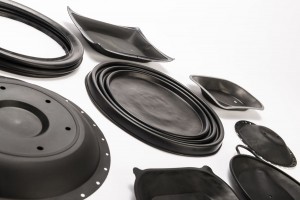Eliminating leaks in the gas meter industry
In the safety-driven natural gas industry, system leaks are a dangerous and costly issue. Residential gas meters and regulators, in particular, are at risk when crucial components such as diaphragms are not optimally designed and manufactured for the environment in which they will work.
An advanced polymer technology, trademarked by Freudenberg Sealing Technologies՚ Metflex Precision Molding organization, addresses these challenges with fiber-reinforced materials that improve the reliability, functionality and longevity of critical gas system components. Diaphragms
made using Metflex dispersed fiber technology (DFT) offer better sealing performance, longer flex life, improved low temperature resilience and enhanced design capabilities than standard diaphragms made from fabric coated polymers. To date, more than 40 million DFT diaphragms
have been used in medium and low-pressure application; primarily in North America, but also in other regions of the world.
“The natural gas industry is very conservative when it comes to embracing new technology, given the safety concerns and costs associated with gas leaks and equipment failures,” said Ben Sculthorp of Metflex Precision Molding. “We want these companies to know there is a better alternative available for the safety-critical components used in low- and medium-pressure applications of less than 150 psi, like residential gas meters and regulators. DFT diaphragms are a proven solution for serious issues like delamination, cracking and leaking in small and medium- pressure gas applications.”
Even as digital metering technologies emerge, mechanical diaphragm gas meters will remain in widespread service for the foreseeable future, especially in China, where usage is growing. These devices rely on displacement created by a piston and cylinder system in combination with a diaphragm to move gas from distribution pipelines into residential gas outlets. The diaphragm acts as both a barrier against escaping gas and a force to push it through residential gas lines inside the building.

